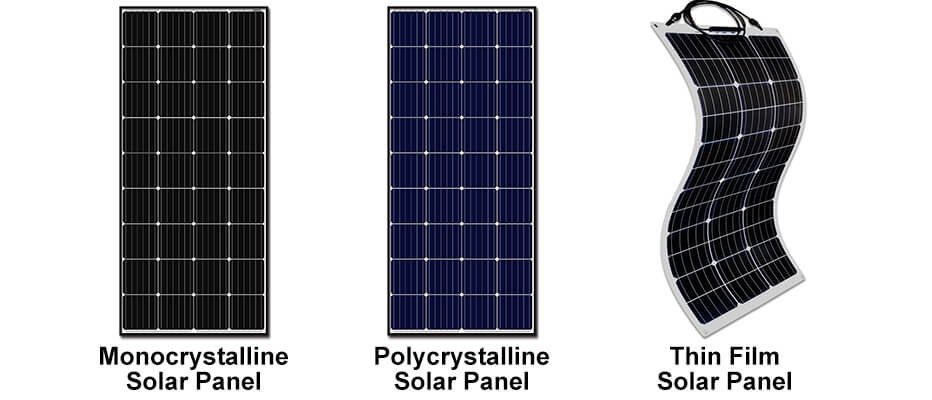Company News
What are the 3 types of solar panels?
When purchasing solar panels, people often consider factors such as cost, aesthetics, and energy efficiency. While these are all important factors, there is one more factor in solar panels that affects these aspects: the type of solar panel you choose.
How many types of solar panels are there? There are three different types of solar panels. The three different types of solar panels are monocrystalline silicon solar panels, polycrystalline silicon solar panels and thin film (amorphous silicon) solar panels.Each with its advantages and disadvantages. The right solar panel will depend on your specific situation and what you want the solar panel to do for you. We’ll discuss the types of solar panels, the advantages and disadvantages of each, and how to choose the type that’s best for you.

Monocrystalline silicon solar panels are the earliest solar panels, and they are also the most developed and have a relatively mature technology. These monocrystalline solar panels are made of about 40 monocrystalline silicon. These solar cells are made of pure silicon. During the manufacturing process, silicon crystals are placed in a vat of molten silicon. The crystal is then pulled very slowly out of the vat, allowing the molten silicon to form a solid crystal shell around it, called a silicon ingot. Then, the silicon ingot is cut into thin wafers. Silicon wafers are made into cells, which are then assembled together to form a solar panel. The surface of the monocrystalline solar panel is blue, and the four corners are missing, and the conversion efficiency is usually around 18-24%.
Polycrystalline silicon solar panels have been developed in recent years, but they are rapidly rising in popularity and efficiency. Just like monocrystalline silicon solar panels, polycrystalline silicon cells are also made of silicon. But polycrystalline batteries are made from shards of silicon crystals that melt together. During the manufacturing process, silicon crystals are placed in a vat of molten silicon. Instead of pulling out slowly, the crystal is allowed to shatter and then cool. Then, once the new crystal cools in its mold, the fragmented silicon is thinly sliced into polycrystalline solar wafers. The wafers are assembled together to form a polysilicon slab. Polycrystalline silicon solar panels are also blue, but under certain light, they will show colorful colors, and the conversion efficiency is about 14-18%.
Thin-film solar panels are a very recent development in the solar panel industry. The most striking feature of thin-film panels is that they are not always made of silicon. They can be made from a variety of materials, including CdTe, a-Si, and CIGS. Their biggest feature is that compared with crystalline silicon solar panels, their flexibility and strength are great, but their conversion efficiency is only 7-14%, and their appearance is also very easy to distinguish. Compared with other solar panels, his price is the highest, probably due to his relatively short production years, and the process is not as mature as polysilicon and monocrystalline silicon.
After understanding these contents, I believe everyone knows which type of solar panel to choose.
- Previous: None yet
- Next: How to choose solar panels?
